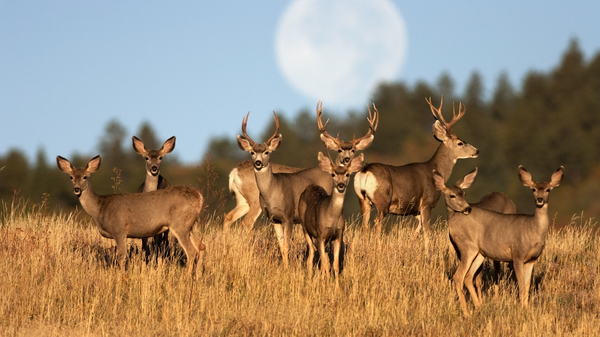July: Buck Moon
In July, the Full Moon is the Buck Moon, named after the new antlers that emerge from a buck’s forehead around this time of the year. It is also called Thunder Moon, Hay Moon, and Wyrt Moon.

A herd of mule deer standing in tall grass in Roxborough State Park, Colorado, US.
©iStockphoto.com/milehightraveler
Jan 2025: See the planets at their best
Buck Moon 2025
2025年7月11日 (金)5時36分
Buck Moon 2026
2026年7月29日 (水)23時35分
Times for the Buck Moon vary by time zone. Times and dates are based on the local time in Tokyo. Change location
Named After the Buck’s Antlers
In July, the Full Moon is called Buck Moon to signify the new antlers that emerge on a deer buck’s forehead around this time.
Male deer, or bucks, shed their antlers and grow new ones every year. Deer belong to the Cervidae family along with elk, moose, reindeer, and other species.
Thunderstorms and Hay Harvest
Other Native American tribes call it Salmon Moon, Raspberry Moon, and Thunder Moon because of the frequent thunderstorms in the summer.
In Celtic, this Moon was known as the Claiming Moon, Wyrt Moon, Herb Moon, and Mead Moon, indicating that July is the time to gather herbs (or wyrts) to dry and use as spices and remedies. The Anglo-Saxons called it the Hay Moon after the hay harvest in July.
Sleep, crime, and menstruation: how Full Moons affect humans
12 Full Moon Names
The Full Moon has been integral to tracking the change of months and seasons since ancient times.
Today, we use many of these ancient month names as Full Moon names, and many of them come from the Colonial Americans adopting Native American names into their calendars.
Although the most commonly used Full Moon names are English interpretations of Native American names, some are also Celtic, Anglo-Saxon, medieval English, and Neo-Pagan.